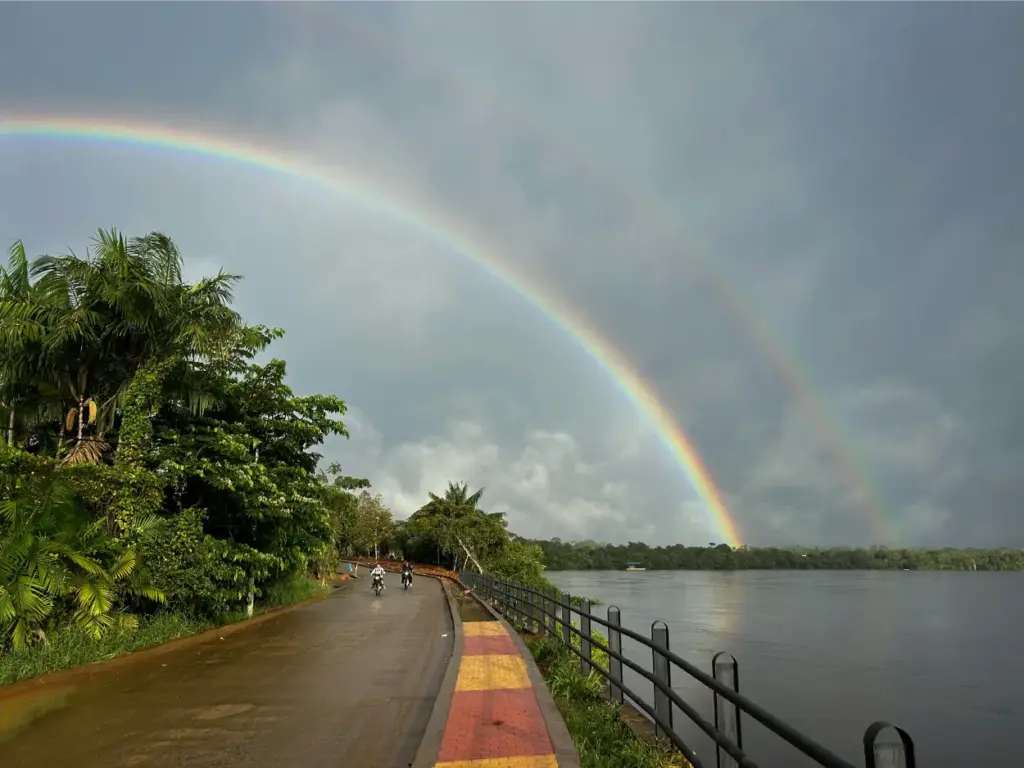When it comes to the Amazon Rainforest Seasons, one can’t help but be captivated by the fascinating dance of climate and weather that defines this breathtaking ecosystem. Encompassing nine countries, the Amazon is renowned for its rich biodiversity and ecological significance. This article offers an in-depth exploration of the unique characteristics that shape the seasons of the Amazon Rainforest, the climatic influences on wildlife, and the mesmerizing weather patterns that contribute to the rainforest’s ethereal beauty.
The Broader Climate Picture of the Amazon Rainforest
The Amazon Rainforest is classified as a tropical rainforest, characterized by a predominantly warm and humid climate throughout the year. Temperatures typically range from a cozy 25-30°C (77-86°F), fostering an ideal habitat for a mind-boggling variety of flora and fauna. Yet, the seasons play a crucial role in determining the specific weather patterns within this lush paradise.

Generally, the Amazon experiences two main seasons: a wet season and a dry season. Unlike the typical seasonal patterns seen in temperate zones, these periods are not marked by freezing winters or snowy landscapes. Instead, they contrast rain levels. During the wet season, torrential downpours create an environment rich in life, while the dry season brings forth lighter rains and ample sunshine. These seasonal shifts not only influence plant growth but also dictate the daily activities and migration routes of various animal species across this astonishing region.
The Wet Season: A Symphony of Life
Here in the Amazon, the wet season spans from November to May, bringing with it a significant increase in rainfall. Certain areas can receive anywhere from 2000 to 3000 millimeters of rain in a year! This seasonal deluge transforms the landscape, swelling rivers, feeding the verdant growth, and nurturing the spectacular biodiversity that thrives during this time.
Beyond just creating a picturesque scene, the wet season is vital for the Amazon’s food chain. The explosion of plant life provides sustenance for several animal species, ranging from monkeys to birds. With the abundance of fruits and flowers, creatures of all kinds flourish, engendering a harmonious ecosystem. The interdependent relationships among species grow stronger, and the forest pulsates with vibrant life.
The Dry Season: Transformation Through Resilience
Just as nature presents its gifts in the wet season, the dry season—from June to October—reveals an entirely different side of the Amazon. During this time, rainfall diminishes considerably while the sun’s rays spread their warmth deeper beneath the forest canopy. The reduced humidity initiates a transformation: rivers recede, unveiling sandy banks, while the once-thriving undergrowth grows sparse.

The dry season, albeit drier, holds its own unique significance in maintaining the balance of the Amazon Rainforest ecosystem. Certain species thrive, capitalizing on reduced vegetation that simplifies hunting for predators. Moreover, many creatures develop innovative strategies to cope with the reduced water supply. While some species may enter dormancy, others embark on migrations seeking better conditions, exhibiting the incredible adaptability of life within this vibrant biosphere.
The Unyielding Influence of Humidity and Temperature
Humidity plays a pivotal role in shaping the climate of the Amazon Rainforest. On average, humidity levels can soar between 77% to 88%, blanketing the rainforest in moisture essential for its survival. This constant humidity supports the growth of tropical trees and diverse plant species, heavily influencing the rainforest’s everyday weather patterns.
Temperature variations are minimal, primarily because the rainforest is situated near the equator. This consistency allows both plants and animals to thrive without significant seasonal interruptions. Nevertheless, researchers caution that climate change is beginning to disrupt these long-standing patterns. Rising temperatures and shifting rainfall trends pose serious threats to this delicate ecosystem, potentially leading to global repercussions. 🌍
Shifting Biodiversity: Adapting to Seasonal Changes
As the seasons transition, the rich biodiversity within the Amazon Rainforest also undergoes transformations. The wet season marks a flourishing time for many species, particularly amphibians like frogs and a variety of bird species that utilize abundant water sources for breeding. The symphony of croaks, chirps, and rustles crafts a vivid auditory canvas, filled with the resilient sounds of nature adapting to its surroundings.
Conversely, the dry season engages its inhabitants with distinct challenges and adaptations. While some species retreat, opting for temporary migrations to regions with more favorable conditions, others continue to thrive by utilizing innovative tactics. Certain plants respond to these seasonal shifts by exhibiting “phenology,” tailoring their flowering or fruiting cycles to align with the wet season, which ensures optimal conditions for seed production and growth.
Human Impact: The Double Edge Sword
Human influence weighs heavily on the dynamics of the Amazon Rainforest seasons. Deforestation, driven by agricultural expansion and urban development, throws the local climate out of balance, leading to altered rainfall patterns that could threaten the survival of countless species. 🚫

Moreover, indigenous communities have coexisted with the forest for generations, mastering the art of living harmoniously within its boundaries. However, shifting weather patterns and the lure of contemporary development threaten their traditional lifestyles, highlighting the complex relationship between human progress and this irreplaceable natural wonder. Increased awareness and active conservation efforts are crucial to safeguarding this ecosystem, ensuring that its richness remains intact for future generations.
The Enigmatic Weather Patterns of the Amazon
The Amazon Rainforest Seasons boast an array of captivating weather phenomena. One moment, you may bask in warm sunshine, only to be met with sudden, intense rain. The unpredictable nature of the weather is largely due to the unique microclimate created by the forest itself. 🌧️
One extraordinary aspect, known as ‘forest respiration,’ sees trees releasing moisture into the atmosphere in a bid to control their local environment. This fascinating process assists in recycling water, creating a self-sustaining cycle that nourishes both the forest and the diverse life it shelters. The intimate relationships between trees, climate, and weather come together to create a micro-environment that is as delicate as it is inspirational.
Interesting Facts About the Amazon Rainforest
- World’s Lungs: The Amazon Rainforest generates approximately 20% of the world’s oxygen, earning the nickname “lungs of the Earth.”
- Water Resource: The mighty Amazon River discharges around 209,000 cubic meters of water per second into the Atlantic Ocean, contributing nearly 20% of global river flow to the oceans.
- Endemic Species: The Amazon is home to over 2.5 million insect species, thousands of plants, and approximately 2,000 bird and mammal species.
- Indigenous Cultures: Close to 1 million indigenous individuals, belonging to roughly 400 distinct ethnic groups, reside within the Amazon, each possessing unique knowledge of the forest’s ecology.
- Seasonal Innovation: An essential yet often overlooked aspect of the Amazon Rainforest Seasons is how local tribes have historically adapted their farming and hunting techniques, skillfully utilizing seasonal variations for enhanced food security.
Conclusion: Embracing the Enchantment of the Amazon
In conclusion, the Amazon Rainforest Seasons tell a mesmerizing story of weather, climate, and the intrinsic balance of nature that shapes the world’s largest tropical rainforest. By delving into these unique seasonal patterns, we uncover the interconnectedness of species, the fragile equilibrium that sustains ecosystems, and the urgent need for conservation efforts aimed at preserving this biodiverse haven. Each season—whether characterized by lush rains or the warmth of the dry months—brings its wonders and challenges, reminding us of nature’s resilience and our responsibility to protect it.
Let us then uphold our commitment to this magnificent ecosystem and ensure that the Amazon Rainforest continues to captivate and inspire future generations with its beauty, wonder, and diversity. 🌳💚
This article encapsulates a lively exploration of the seasons of the Amazon Rainforest, and is formatted to maintain engagement while providing comprehensive information. Enjoy sharing its vibrant content!


